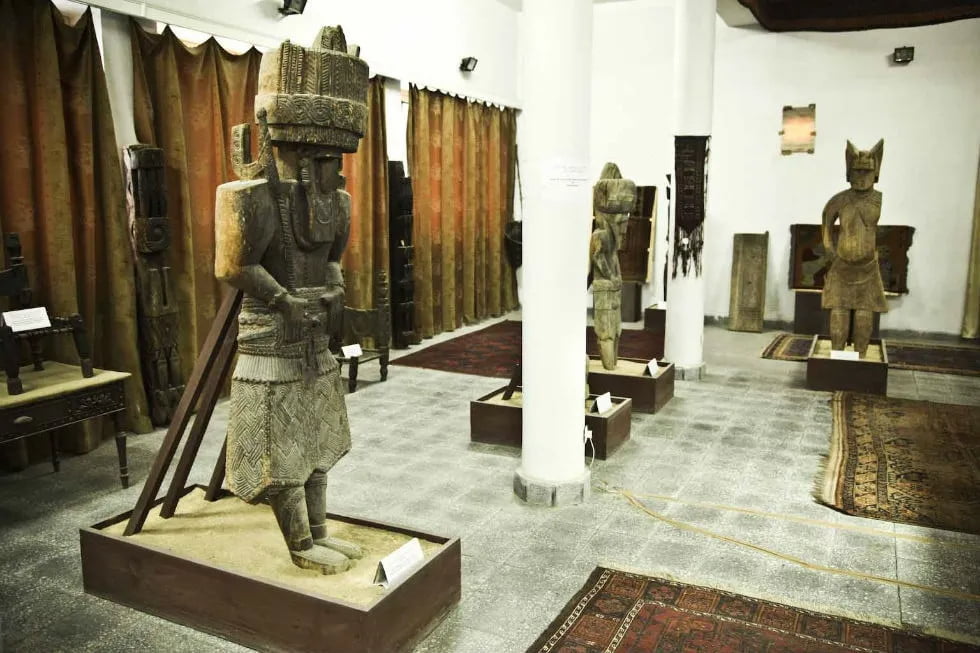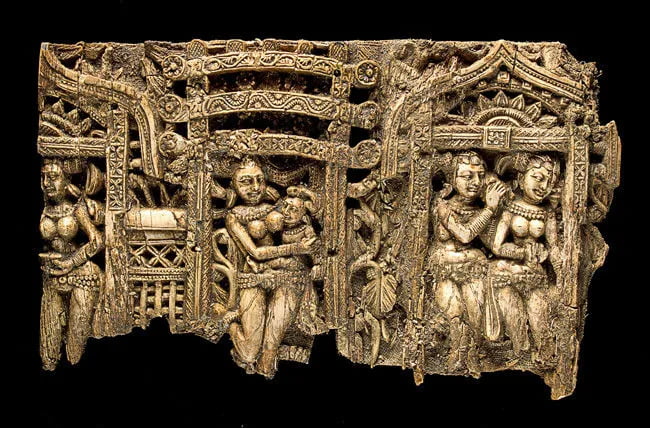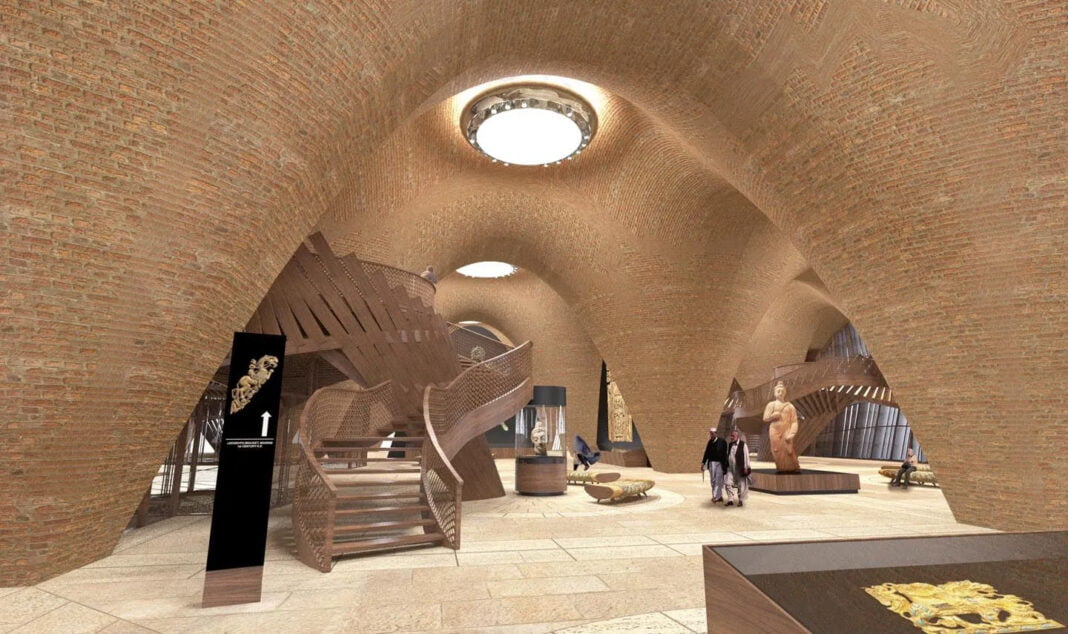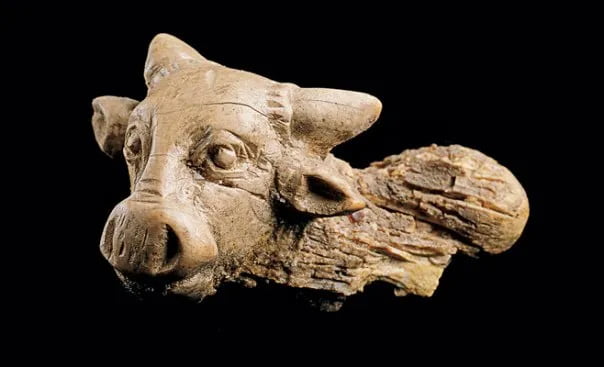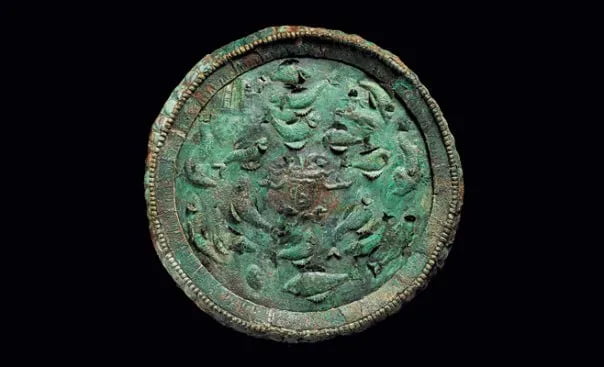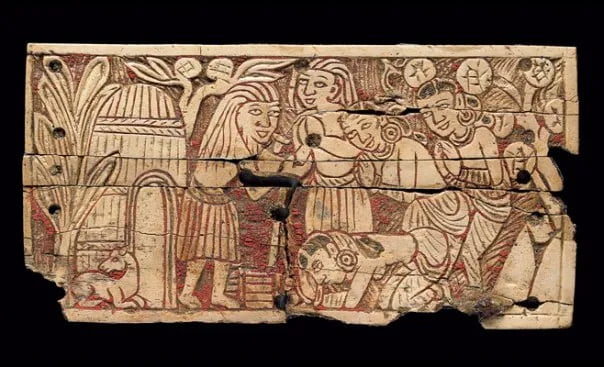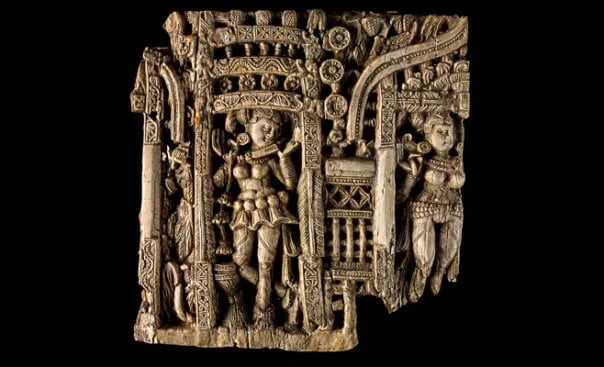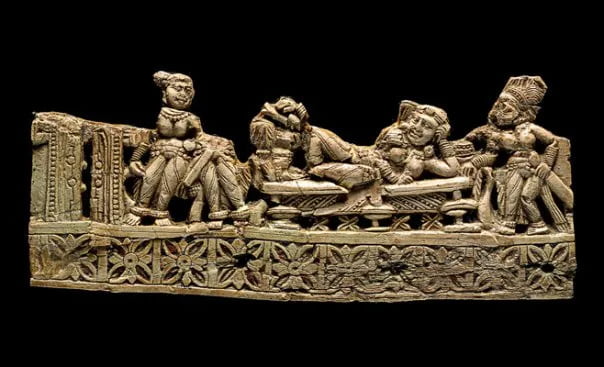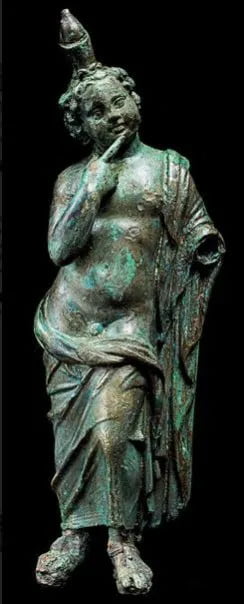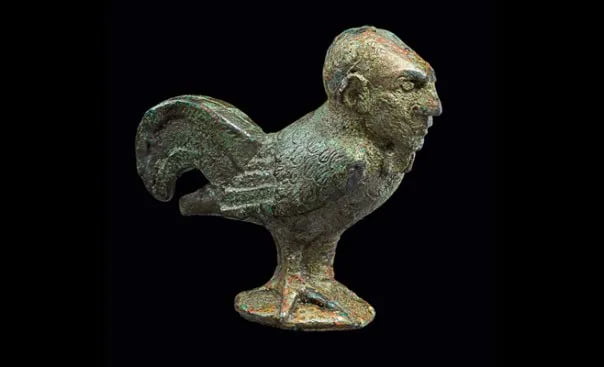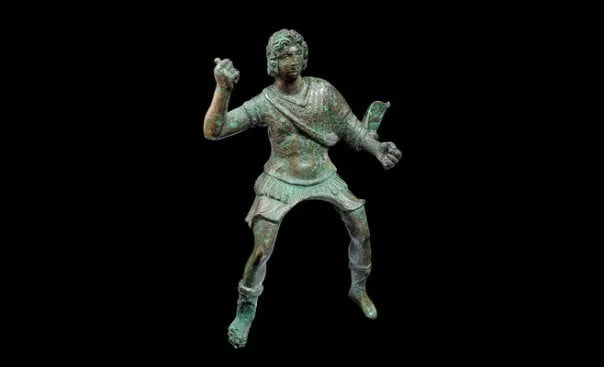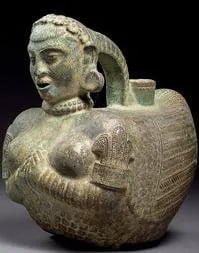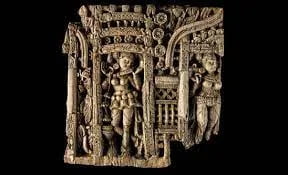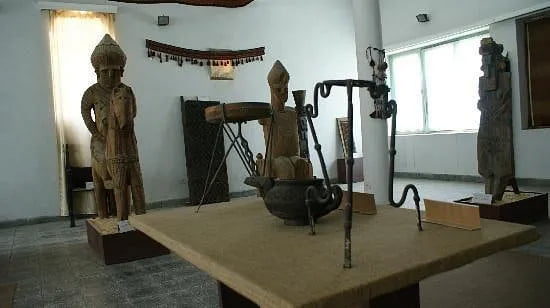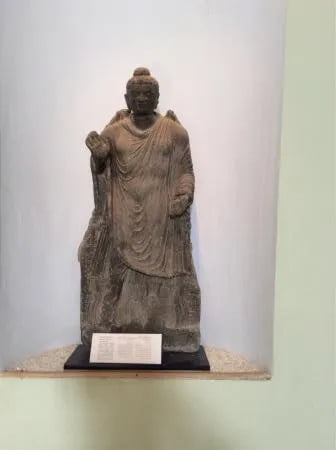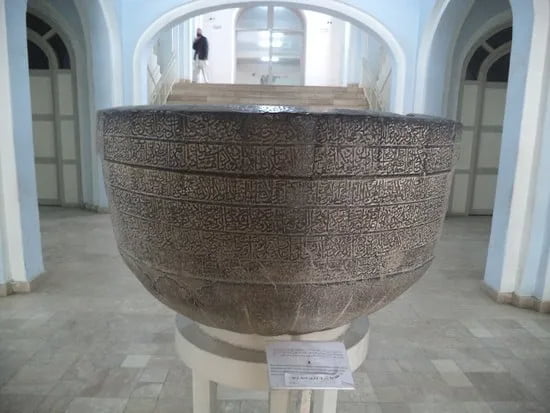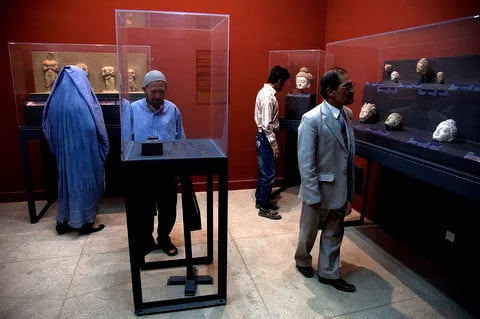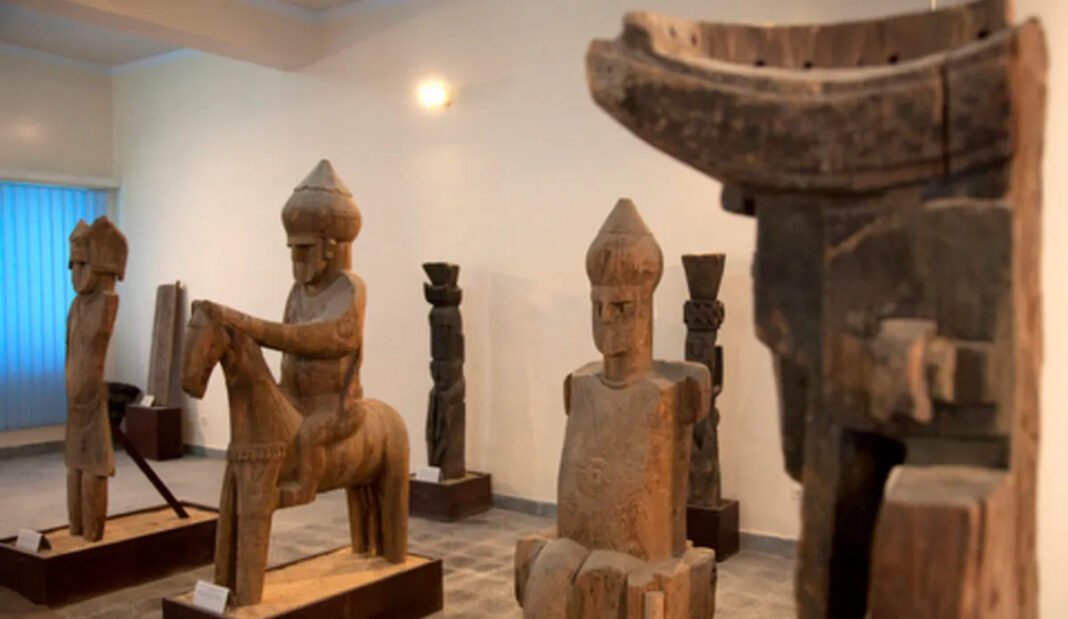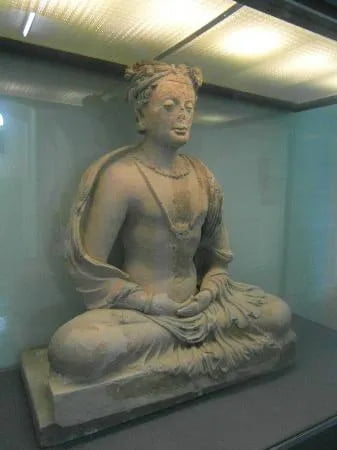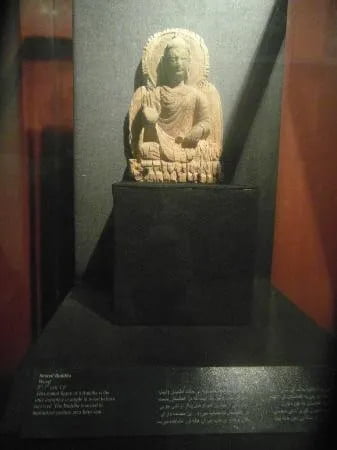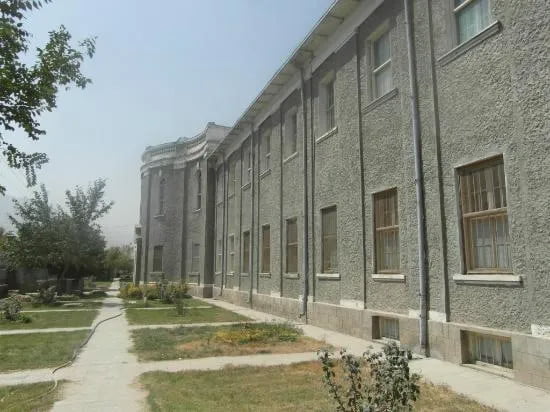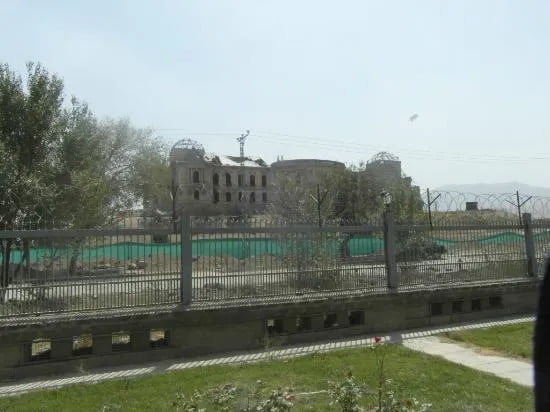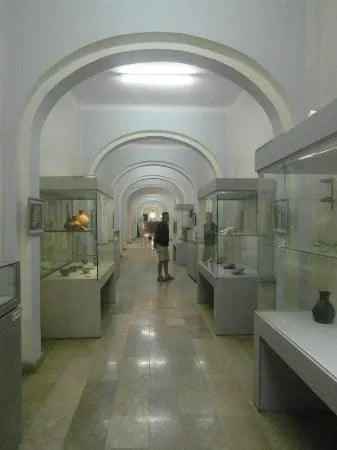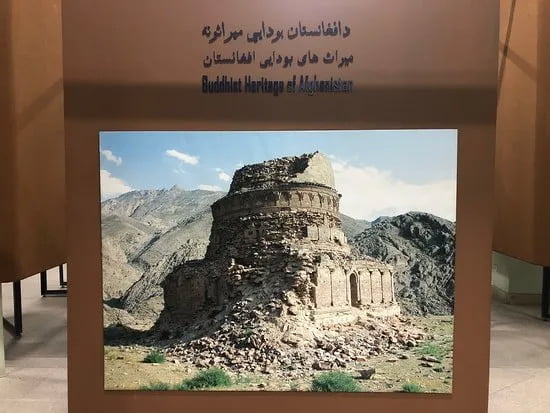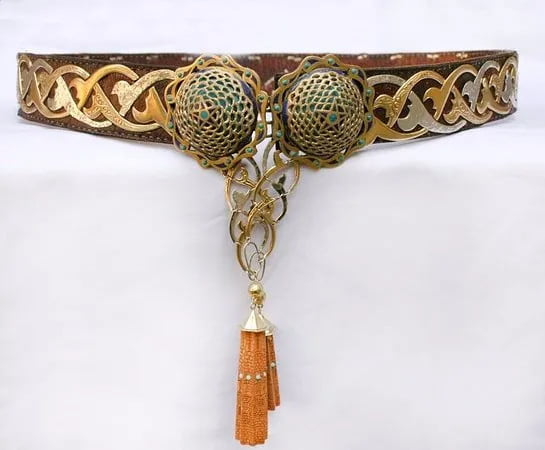Discovering the Kabul Museum – An Introduction
Step into the heart of Afghanistan’s cultural legacy with the Kabul Museum, a testament to the resilience and richness of the nation’s heritage. Located amidst the bustling streets of Kabul, this museum stands as a beacon of history, art, and cultural identity. Here, the echoes of ancient empires and the vibrant spirit of modern Afghanistan intertwine, offering visitors a glimpse into the diverse tapestry of the nation’s past and present. Discover prehistoric pottery, exquisite Buddhist statues, and the vibrant textiles that tell Afghanistan’s story.
The Kabul Museum: History and Resilience
- The Kabul Museum, officially known as the National Museum of Afghanistan, traces its roots back to 1919. This museum is a testament to a nation’s desire to preserve its heritage even amidst a complex history. Initially housed in the Bagh-i-Bala palace, it found a permanent home in 1931, becoming a custodian of Afghan history and artistry.
*Yet, the museum’s journey mirrors the nation’s own. Conflict, political upheaval, and the threat of destruction left their mark. The civil war of the 1990s was particularly devastating – a rocket attack in May 1993 shattered galleries and led to the loss of countless irreplaceable artifacts. But the Kabul Museum is a survivor. With international support and the unwavering dedication of its staff, it has undergone extensive restoration. Today, reopened since 2004, it serves as a symbol of defiance and hope for the future of Afghanistan’s heritage.
A Cultural Gem in the Heart of Afghanistan:
Kabul Museum, officially known as the National Museum of Afghanistan, was founded in 1919. This act was a testament to the nation’s desire to preserve its artistic and archaeological treasures. Initially housed in the Bagh-i-Bala palace in Kabul, the museum found a permanent home in 1931. There, it has served as a custodian of Afghanistan’s cultural heritage – a role tested by time.
Challenges and Triumphs:
Throughout its history, Kabul Museum has faced numerous challenges. Conflict, political instability, and the threat of looting and destruction have been constant companions. The civil war in the early 1990s was particularly devastating. A rocket attack in May 1993 shattered galleries, leading to the loss of many precious artifacts.
Resilience and Restoration:
Despite these setbacks, Kabul Museum has persevered, with the support of the international community and dedicated efforts by museum staff to preserve and restore its collections. Following the fall of the Taliban regime in 2001, extensive restoration efforts were undertaken, culminating in the reopening of the museum in 2004.
A Treasure Trove of Artifacts:
Today, Kabul Museum boasts a diverse collection of artifacts spanning thousands of years of Afghan history and culture. From ancient pottery and sculptures to Islamic art, numismatic treasures, and contemporary artworks, the museum offers a comprehensive look at the artistic, religious, and social evolution of Afghanistan.
Exploring the Museum:
Visitors to Kabul Museum are greeted by a wealth of exhibits, each offering a unique perspective on Afghanistan’s cultural heritage. From the Gandhara art of ancient Buddhist kingdoms to the vibrant textiles and ethnographic displays showcasing the country’s diverse cultural traditions, there is something to captivate and inspire every visitor.
Preserving Afghanistan’s Legacy:
Beyond its role as a repository of artifacts, Kabul Museum plays a crucial role in preserving Afghanistan’s cultural legacy for future generations. Through conservation efforts, educational programs, and community engagement initiatives, the museum seeks to safeguard and promote an understanding of Afghanistan’s rich cultural heritage.
Conclusion:
As you embark on your journey through Kabul Museum, prepare to be transported through time and space, encountering the wonders of Afghanistan’s past and present. From the ancient civilizations that once flourished in this land to the vibrant cultural tapestry of contemporary Afghan society, the museum invites you to explore, discover, and celebrate the enduring spirit of Afghanistan’s cultural heritage.
The Kabul Museum: A Phoenix Rising
Defiance in the Face of Destruction
Amidst the bustling streets of Kabul, a testament to resilience stands tall—the Kabul Museum, a beacon of Afghanistan’s cultural heritage rising from the ashes of destruction. Once hailed as Central Asia’s finest museum, its journey is one of defiance, destruction, and unwavering determination.
A Haven Amidst Chaos
In its heyday, the museum housed treasures unparalleled in their beauty and historical significance. From prehistoric figurines to ancient Buddhist artifacts, its galleries were a testament to Afghanistan’s rich tapestry of cultures. Yet, this cultural haven became a battleground during the tumultuous years of civil war, facing catastrophic damage and looting that left scars that ran deep.
The Darkest Hour
The darkest hour came with the arrival of the Taliban regime in 1996. Fueled by extremist ideology, they purged the museum of its pre-Islamic statues and images, leaving a trail of destruction in their wake. The world watched in horror as the famed Buddha statues at Bamiyan were reduced to rubble, echoing the Taliban’s campaign to erase Afghanistan’s diverse cultural heritage.
A Glimmer of Hope
But even amidst the chaos and devastation, a glimmer of hope emerged. Museum staff, risking their lives, safeguarded what they could, hiding away precious artifacts from the hands of destruction. The international community rallied behind the cause, funding repairs and restoration efforts to breathe life back into the museum’s halls.
The Road to Revival
In 2003, a ray of hope pierced through the darkness when the Bactrian gold collection, feared lost, was retrieved from a hidden vault. Slowly but steadily, the museum began its journey of revival, a testament to the resilience of Afghanistan’s cultural legacy.
Facing Modern Challenges
Today, as you step through the museum’s gates, armed Taliban guards stand watch, a stark reminder of the challenges that persist. Yet, amidst the remnants of a turbulent past, the museum’s halls hum with activity once more. Ceramic bowls glazed in vibrant hues, ancient coins that whisper tales of bygone eras, and wooden totems that bear witness to centuries of history—all find a home within these walls.
Though scars remain, the museum stands as a symbol of defiance, a testament to Afghanistan’s enduring spirit. Yet, the road ahead is fraught with challenges. Economic hardships, ongoing threats of looting, and the looming specter of ideological extremism cast shadows over the museum’s future.
Embracing Hope for the Future
But amidst the uncertainty, there is hope. The Taliban’s pledge to protect cultural heritage offers a glimmer of optimism, a beacon of possibility in a world shrouded in uncertainty. As the museum continues its journey of restoration, it serves as a reminder that even in the face of adversity, the human spirit endures.
In the next installment of our guide, we’ll delve deeper into the Kabul Museum’s collections, offering a closer look at the treasures that embody Afghanistan’s rich cultural heritage. Join us as we unravel the stories hidden within these ancient artifacts and explore the wonders that await within the museum’s walls.
Exploring the Treasures of Kabul Museum
Delving into Kabul Museum’s Collections
Unveiling Afghanistan’s Cultural Tapestry
Step into a world of wonder as we embark on a journey through the treasures of Kabul Museum. This repository of Afghanistan’s rich cultural heritage holds wonders from ancient artifacts to contemporary expressions of Afghan society. Each exhibit offers a glimpse into the country’s diverse history and artistic legacy.
Kabul Museum: Embarking on a Historical Voyage
- Ancient Artifacts: Explore the ancient civilizations that once thrived in the heart of Asia. Marvel at prehistoric pottery, intricately carved sculptures, and artifacts that date back thousands of years. These objects offer insights into Afghanistan’s early history.
- Gandhara Art: Immerse yourself in the beauty of Gandhara art, a fusion of Hellenistic and Indian influences. Admire Buddhist sculptures and reliefs that reflect the cultural richness of ancient Afghanistan. Gandhara art showcases the region’s role as a crossroads of civilizations.
- Buddhist Relics: Delve into Afghanistan’s Buddhist heritage through relics and artifacts found at sites like Bamyan and Hadda. Encounter statues, stupas, and delicately inscribed manuscript fragments. These offer glimpses into the spiritual practices of bygone eras, revealing the profound influence of Buddhism on Afghan society.
Kabul Museum: Exploring Islamic Art and Beyond
- Islamic Art: Witness the splendor of Islamic art and architecture showcased in the museum’s collections. From intricate calligraphy to ornate ceramics, experience the enduring legacy of Islamic culture in Afghanistan, reflecting centuries of artistic and intellectual achievements.
- Numismatics: Trace Afghanistan’s numismatic history through displays of coins and currency spanning ancient to modern times. Explore the evolution of trade, economy, and cultural exchange through the country’s rich numismatic heritage, highlighting its interconnectedness with the wider world.
- Ethnographic Exhibits: Gain insight into Afghanistan’s diverse cultural landscape with ethnographic exhibits featuring traditional clothing, jewelry, and musical instruments. Discover the customs and traditions that shape Afghan society, celebrating the resilience and creativity of its people.
Unveiling Contemporary Expressions
- Contemporary Art: Experience the creativity of Afghan artists through exhibitions of contemporary art. From painting to sculpture, discover the diverse expressions of modern Afghan society, reflecting the complexities and aspirations of a nation in transition.
Preserving Heritage for Future Generations
- Cultural Heritage Preservation: Learn about efforts to preserve Afghanistan’s cultural heritage through conservation projects and educational programs. Support the museum’s mission to safeguard the country’s artistic legacy for future generations, ensuring that Afghanistan’s cultural treasures endure for centuries to come.
Engaging with Afghan History and Culture
- Interactive Displays: Engage with interactive displays and multimedia installations that offer immersive learning experiences. Dive deeper into Afghan history and culture through innovative storytelling techniques, fostering a deeper appreciation for the country’s rich heritage.
- Temporary Exhibitions: Stay informed about temporary exhibitions featuring rotating displays of art and artifacts. From thematic exhibitions to guest curated shows, there’s always something new to discover at Kabul Museum, providing fresh perspectives on Afghanistan’s cultural landscape.
Connecting with the Global Community
- Virtual Tours: Explore the museum’s collections and exhibitions from anywhere in the world with virtual tours. Embark on a virtual journey through Afghan art and culture from the comfort of your home, connecting with the global community and fostering cross-cultural understanding.
Supporting Scholarship and Research
- Research Facilities: Discover research facilities and resources available for scholars, researchers, and students interested in studying Afghan history and archaeology. Access archival materials and scholarly publications to deepen your understanding of Afghanistan’s cultural heritage, contributing to ongoing efforts to expand knowledge and promote cultural exchange.
Bringing Afghanistan Home
- Gift Shop: Support the museum’s mission by purchasing souvenirs, books, and replicas inspired by Afghan art and culture. Take home a piece of Afghanistan’s rich heritage as a memento of your visit, sharing the beauty and diversity of Afghan craftsmanship with friends and family around the world.
Kabul Museum: Reflecting on the Journey
- Café and Refreshments: Relax and recharge at the museum’s café, offering a selection of refreshments and snacks. Take a moment to savor the experience and reflect on your journey through Kabul Museum, appreciating the timeless beauty and resilience of Afghanistan’s cultural heritage.
As you bid farewell to Kabul Museum, carry with you the memories of a journey through time and culture. May the treasures you’ve encountered inspire a deeper appreciation for Afghanistan’s rich heritage and enduring spirit, fostering a greater understanding and respect for the diverse cultures that shape our world.
The Kabul Museum Experience: Practicalities and Beyond
Visiting the Kabul Museum: Practicalities
The logistics of visiting the Kabul Museum are likely to evolve along with Afghanistan’s overall tourism landscape. Before traveling, it’s wise to check the museum’s website (if available) or consult with a reputable travel agency specializing in Afghanistan for the most up-to-date information. Here are some key aspects to consider:
- Hours, Admission, Location: [Briefly state if known, but include a phrase like, “Please verify before your visit, as these are subject to change.”]
- Security: “The Kabul Museum takes visitor security seriously. Expect measures such as bag checks upon entry. These precautions are in place for your protection.”
- Cultural Sensitivity: “To show respect for local Afghan customs, modest dress is advised. Photography may be restricted in certain galleries – please follow posted guidelines.”
- Guides: “Guided tours can enhance your understanding of the exhibits. Ask at the museum if they offer this service, or if they can recommend a knowledgeable, licensed guide.”
Expanding Your Kabul Museum Experience
The Kabul Museum is a jewel, but your exploration of Afghan culture shouldn’t end at its doorsteps. Here are some ways to broaden your understanding and create a richer travel experience:
- Local Markets: “Continue your exploration of Afghan crafts with a visit to bustling Chicken Street. Here, you can haggle for carpets or admire hand-worked silver. Remember, fair bargaining practices support local artisans.”
- Historical Echoes: “Pair your museum visit with a walk through Babur’s Gardens. This tranquil oasis, designed by a Mughal emperor, adds another layer to your understanding of Afghan history.”
- Modern Kabul: “For a taste of contemporary Kabul life, stroll the cafes and shops of Shahr-e-Naw. This experience offers insights into the energy of today’s Afghanistan.”
Supporting Afghan Cultural Heritage
Your visit to the Kabul Museum directly contributes to its ongoing mission, but there’s more you can do.
- Donations: “Consider making a donation to support preservation efforts and educational programs. Even a small contribution helps protect Afghanistan’s heritage. Inquire at the museum or check for reputable charities dedicated to this cause.”
- Virtual Explorations: “Can’t visit in person? Many museums offer virtual tours and online exhibits. Stay connected with the Kabul Museum through its website or social media for updates.”
- Spread the Word: “Share your Kabul Museum experience with others. Tourism, when done in responsible and sustainable ways, benefits local communities and promotes intercultural understanding.”
A Journey of Discovery
Your visit to the Kabul Museum is an opportunity for discovery, connection, and supporting a resilient cultural institution. May the treasures and stories you encounter spark a lifelong appreciation for Afghanistan and its enduring spirit.


